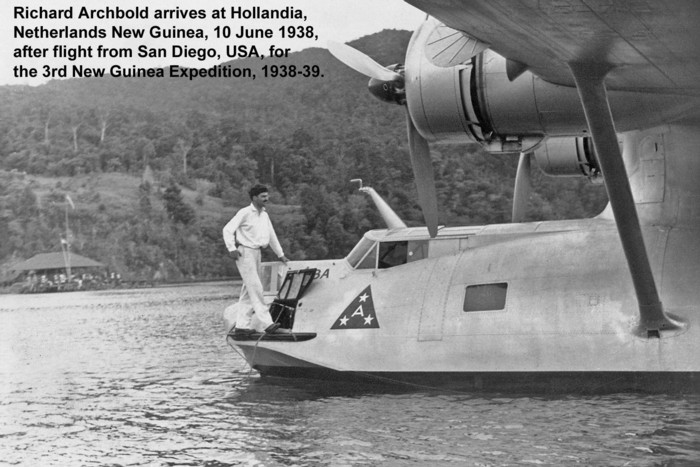Dit vraagt natuurlijk wat uitleg!
Richard Archbold was een rijke Amerikaanse zooloog, die in de jaren dertig drie expedities naar Nieuw Guinea heeft gemaakt.
Op de tweede expeditie heeft hij gebruik gemaakt van een Fairchild 91 amfibie vliegtuig, genaamd KONA.
Op de derde expeditie heeft hij gebruik gemaakt van een Consolidated PBY-2 genaamd GUBA II.
Wie heeft hier informatie over, of tips wellicht. Foto's... etc. Tips over grote internationale fora mbt de civiele luchtvaart zijn ook welkom.
Weergegeven resultaten: 1 t/m 3 van 3
Discussie: Expedities Richard Archbold
-
1 april 2011, 12:12 #1
 Expedities Richard Archbold
Expedities Richard Archbold
-
1 april 2011, 16:14 #2
-
2 april 2011, 09:34 #3
 Senior Member
Senior Member

- Geregistreerd
- 2 juli 2008
- Locatie
- Riverton, Western Australia
- Berichten
- 102

Richard Archbold[1]
Born on 9 April 1907 Richard Archbold was an American zoologist and philanthropist. He sponsored a series of biological expeditions to New Guinea for the AmericanMuseum of Natural History, the first one being in 1933/34 which took place in south-eastern New Guinea covering an altitude range from sea-level to alpine tundra. Logistical problems and limitations started Archbold thinking about the use of aircraft for future expeditions, as well as radio for communications.
The second expedition took place from February 1936 to January 1937 and took place in southern New Guinea, at and near Daru, along the Fly and Palmer Rivers and in the Wassi Kussa area, in today’s Papua New Guinea. The expedition used a Fairchild 91 amphibian flying boat registered as NR777 but the aircraft was lost during a tropical storm at Port Moresby, where it was anchored.
Archbold’s third expedition was conducted from April 1938 to May 1939 and took place in Netherlands New Guinea, exploring the north slope of the SnowMountains, from Mt Wilhelmina to the IdenburgRiver (a tributary of the MamberamoRiver).
The expedition used a Consolidated Catalina registered as NC777 (a re-use of the previous registration) and named Guba II. It arrived in Hollandia on 8 June 1938[2].
Flown by Russell R. Rogers,the aircraft was used for logistic purposes as wells as aerial reconnaissance and photography. On one of these reconnaissance flights, on 23 June 1938, the densely and hitherto unknown, BaliemValley was discovered.
When the expedition was over Archbold intendied to return to the USA across the Pacific, but he was contacted by Captain P.G. Taylor, representing Australian interests which wanted to explore the practicality of an air route from Australia to Europe over the Indian Ocean and via Africa rather than Asia. Archbold agreed to the idea and the aircraft was chartered for the crossing by the Australian government. Taylor joined the crew as a navigator.
The flight started at Port Hedland, Western Australia on 4 June 1939[3] and flew from there to the Cocos (Keeling) Islands, Diego Garcia, the Seychelles and Mombasa, Kenya, where it arrived on 17 June 1939, except that, after leaving Port Hedland on 4 June 1939, the aircraft was diverted to Batavia because of bad weather. In Mombasa Taylor left the crew to return to Australia and Archbold continued the flight westwards, landing in New York on 1 July 1939.
NC777 was eventually sold to the RAF as AM258. It was later registered as G-AGBJ. Eventually it was acquired by Saunders Roe and given military serial SM706. It sank sometime prior to September 1944.[4]
[1] Wikepedia
[2]http://www.vpnavy.com/blackcats_history.html
[3] http://www.archbold-station.net/abs/...archboldCV.htm
[4]Legg, D., Consolidated PBY Catalina, p.22


 Met citaat reageren
Met citaat reageren
